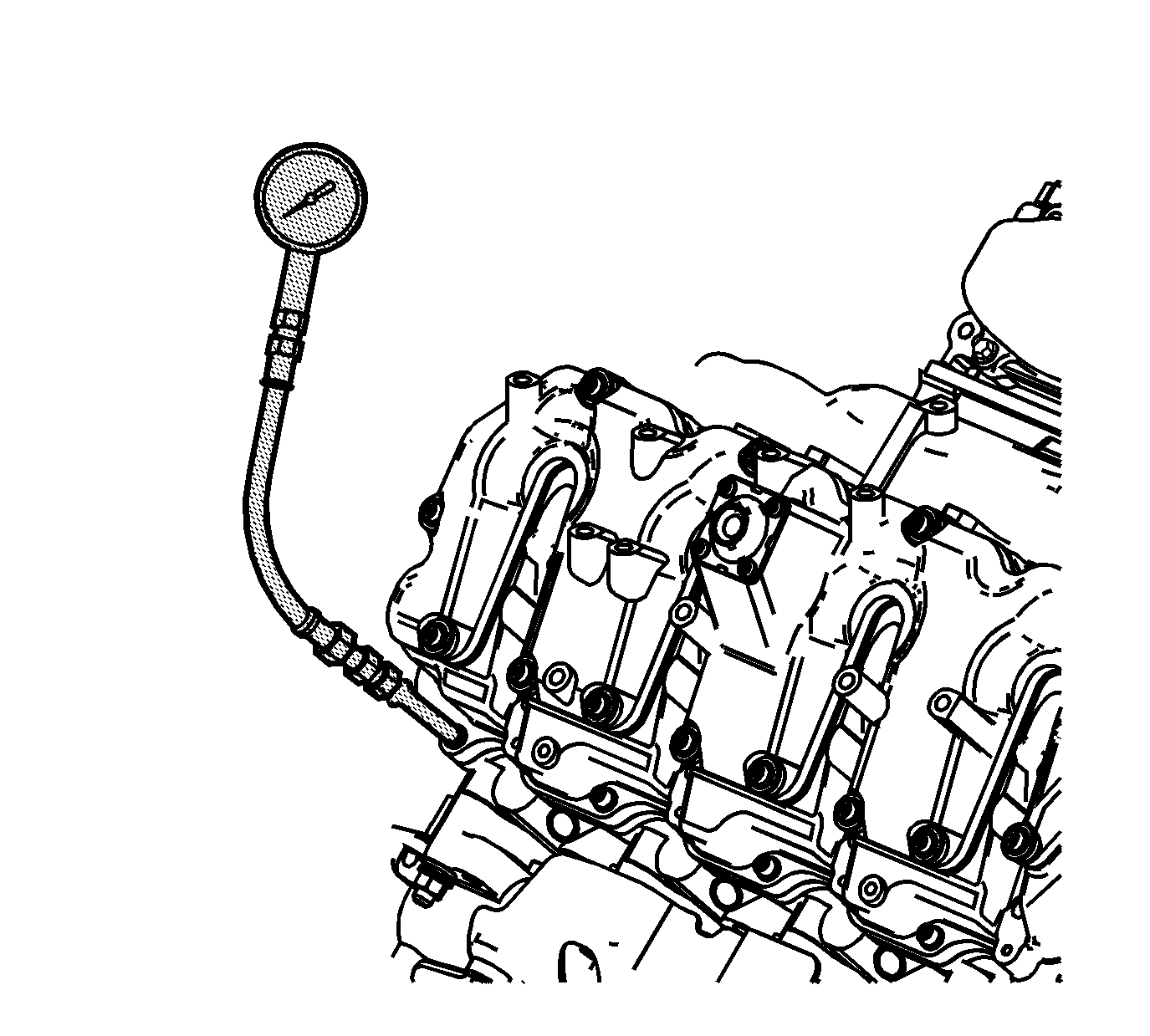Special Tools
| • | J 26999 Compression Gage |
| • | EN-47603 Compression Gage Adapter |
For equivalent regional tools, refer to
Special Tools
- Ensure that the vehicle's batteries are in good condition, and fully charged.
- Operate the vehicle until the engine is at normal operating temperature.
- Shut off engine.
- Disconnect the crankshaft position sensor.
- Disconnect glow plug nut; remove all 8 glow plugs. All 8 glow plugs must be removed from the engine during each cylinder test to obtain valid test results.
- Prior to taking a compression reading, verify the cranking speed is greater than 140 RPM. If the cranking speed is below 140 RPM, repair the slow cranking speed condition before continuing with the compression test. Refer to
Engine Cranks Slowly.
- Install the
J 26999 gage
in the glow plug hole for the cylinder that is being checked.

Caution: Do not add oil to any cylinder during a compression test as extensive engine damage may result.
- Connect the
J 26999 gage
to the
EN-47603 adapter
.
- Using the vehicle starter motor, rotate or crank the engine for 6 compression strokes, puffs, for the cylinder being tested.
- Observe the
J 26999 gage
and note the reading as the compression test is being performed. A normal cylinder reading will be indicated if compression builds up quickly and evenly to
the specified level. An abnormal reading will be indicated if compression is low on the first compression stroke, starts increasing on the following compression strokes but does not reach the specified level.
- Record the compression reading for the cylinder just tested.
- Disconnect the
J 26999 gage
from the
EN-47603 adapter
and remove adapter from the glow plug hole.
- Repeat steps 8-13 for all remaining cylinders. All 8 cylinders must be tested to obtain valid test results. Record the readings.
- The minimum compression in any one cylinder is 2069 kPa (300 psi). There should not be more than 345 kPa (50 psi) difference between a suspect cylinder and the average compression of all 8 cylinders.
| • | Normal - Compression builds up quickly and evenly to the specified compression for each cylinder. |
| • | Piston Rings Leaking - Compression is low on the first stroke. Compression builds up with the following strokes but does not reach normal. |
| • | Valves Leaking - Compression is low on the first stroke. Compression usually does not build up on the following strokes. |

